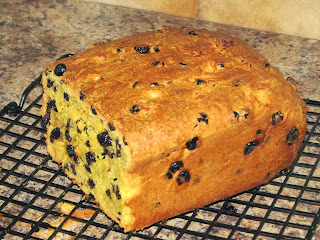SAFFRON CAKE
Not long after I started my Blog I made my favourite, grandmother’s saffron bun recipe. I don’t usually make a cake because it goes stale quickly and buns are easier to freeze. But if I am attempting to complete an anthology of Cornish recipes then I must make a Cake. The queen of all Cornish cakes, instantly recognisable as part of Cornish culture and cuisine and much loved by everyone Cornish. Within my trusty 1920s Cornish recipe book there are about ten versions. Most I discard immediately, all have to be halved or quartered as our forebears made huge cakes! In the end I appropriately plumped for the recipe from the Falmouth area.
1 lb 2 oz plain flour
2 oz very finely chopped mixed peel
½ lb currants - I used a couple more oz.
4 oz lard
3 oz butter
2 oz castor sugar
generous pinch nutmeg
pinch salt
warm milk - about 9 fl oz with a teaspoon sugar
½ oz fresh yeast [or half sachet dried ie 3 ½ gr].
saffron - depending on quality and how saffrony you want it.
Saffron cakes are denser and heavier than buns. My buns are very light and spongy.
The fat content is far greater here than my bun recipe, the sugar content less too. This should make it heavier and there is about half the quantity of yeast as well. I set about making it.
I wrapped some strands of saffron in some baking parchment and put them in a warm oven for a quarter of an hour. Then, using a rolling pin crushed the dried strands still in the paper, becoming powder like. I then added a few extra strands.
I rubbed the fat into the flour, salt and nutmeg, until it resembled fine breadcrumbs. Then just added the rest of the dry ingredients. Mixing well.
I then warmed the milk and a little sugar to tepid and stirred in the yeast and saffron, leaving it for a while until it started to froth a little. Made a well in the mix and poured in the liquid, bringing it all together with your hand and then tipped it onto a floured surface and began gently kneading until the mix is smooth. Just a few minutes.
Place in a warm spot to prove. Do not expect it to double in size, like bread or the buns.
my book suggested “put a warm plate on it and stand in a warm place until the mixture raises the plate”. That’s all I had to go on!! I left it for a couple of hours, then kneaded again for a minute and put it in an lightly oiled large loaf tin to prove again for an hour.
Preheat the oven to about 180 Deg C. My book suggested 1¼ hours and it took all of that.
But I turned the oven down to about 170 after half the time. The taste test? Absolutely delicious. Quite different from the buns, much heavier, as I thought it would be. The big plus was that it took no time at all. Then the even bigger plus was that the cake was still moist and equally delicious the following day. I don’t know too much about the science of baking but would the high fat content be a factor? I must try it once more as a plain yeast cake!! [I did and it was great!]
Day 3 - the cake it still good. I am so pleased I started this project and found this recipe.



Your cake looks fantastic, I am going to give it a go. What is the best safron to use please?
ReplyDelete